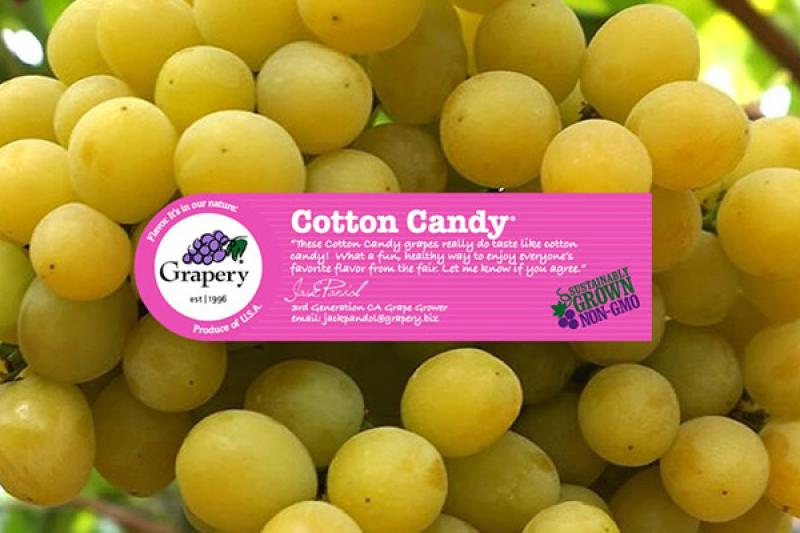First there was fruit flavored candy, now there’s candy flavored fruit


Think back on the last time you had cotton candy. Maybe this was at a sporting event or a carnival where they spin it around a stick. You may remember that cotton candy tastes a little bit like vanilla, but mostly a whole lot like sugar.
Getting that vanilla flavor into your normal table grapes is quite difficult; the mastermind behind these grapes is doing it all through traditional breeding, which can take many years. David Cain, a geneticist and fruit breeder in California, is tapping into the genetic variation from an entirely different species of grapevine to get these interesting new flavors. The fruit is actually a hybrid between Vitis vinifera and Vitis labrusca.
Most of our table grapes are produced from Vitis vinifera, the same species that our wine is made from. However, when it comes to most jams, juices, and jellies, a different species, Vitis labrusca, is at play. You may know of Vitis labrusca as the Concord grape. The traits of a Concord grape consists of a foxy or musky flavor, large seeds, and a skin that easily slips off. This is very different than our table grapes which lack seeds, have thin skins, a thick pulp, and a certain crispness when you bite into them.
In order to introduce a more extensive flavor profile into Vitis vinifera without losing the traits we enjoy having in our table grapes, Cain began to crossbreed these two species of grapes until he finally arrived at the perfect grape. It all started with a special Concord variety from the University of Arkansas that was characterized by a high sugar content, low acidity, and a burnt sugar/vanilla flavor. After discovering this variety and signing a licensing agreement, Cain started cross-pollinating it with many of his Californian varieties by taking the pollen from the male flowers of one plant and brushing it onto the female flower parts of the other plant. The tricky part is the resulting grapes cannot reproduce because they are seedless, so after fertilization they had to take out the embryos and grow them in test tubes before they could plant them in the field. What follows is many days of taste testing and selecting for all the right traits, such as early-ripening. The work that goes into making these grapes is a painfully long process that can take up to 15 years, but the end-product definitely appears to be in popular demand.
The grapes have different ripening schedules and short growing seasons, so you will only be able to find them at certain times of the year. Try using their store locator to find out which stores near you carry them! And if you’re sitting here thinking that cotton candy is awful and oversweet, then maybe you would look forward to tasting their other varieties called Moon Drop, Tear Drop, Gum Drop, and Flavor Promise, which come in different flavors and shapes!
Written by TPS Fellow Rachel Combs
References:
https://grapery.biz/index.php/our-grapes/cotton-candy
https://www.latimes.com/business/la-xpm-2013-jul-31-la-fi-cotton-candy-grape-20130801-story.html
